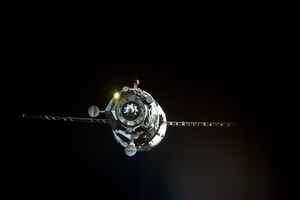WASHINGTON, Jan. 5, 2022 /PRNewswire/ -- NASA has provided an advance release of its NASA Autonomous Flight Termination Unit (NAFTU) software code to the launch industry, a critical milestone toward the final certification of NAFTU, which is on-track for February 2022.
NAFTU is a game-changing command and control system available to launch vehicle providers for use at all U.S. launch ranges in ensuring public safety during launch operations. Among the companies that are working with the NAFTU software is Rocket Lab, which has a launch pad at Virginia Space's Mid-Atlantic Regional Spaceport at NASA's Wallops Flight Facility.
"This is a major milestone that enables Rocket Lab and other U.S. launch companies to integrate the software now with their launch vehicle's hardware and run performance simulations," said David L. Pierce, Wallops Flight Facility director. "This is a key achievement toward enabling Rocket Lab launches from Wallops, in parallel with the NASA teams' final safety certification steps, which are currently underway. Rocket Lab's use of the NASA software will enable a high degree of confidence moving forward toward launch."
NASA enlisted corporate partners SAGRAD, ASRC Federal, Axient/MEI and KBR to assist the agency in the development of the software's test procedures and also to support certification testing.
To ensure the ultimate success of the final safety certification of the software, NASA conducted formal software dress rehearsals, or "official timed dry runs," of the test procedures in late December. These dry runs at NASA Wallops and at Axient facilities in Melbourne, Florida, went well and show the software test procedures and the software are performing as designed, said Pierce.
"I am very proud of the entire NAFTU team for reaching these critical milestones of releasing the software to industry, as well as completing the test procedure official dry runs," said Pierce. "With these dry runs completed, we have greater than 99% confidence that the official 'run for record' witness testing of the software and procedures in January will be successful. This, in turn, will lead to the flight safety certification of the software by the end February 2022."
NASA Wallops, in collaboration with NASA Headquarters, the U.S. Air Force, U.S. Space Force, and the Federal Aviation Administration, began development of the NASA Autonomous Flight Termination System in 2020, when the program became fully funded. The NAFTU system is more complicated than other, proprietary automated flight safety systems (AFSS) in that it's designed to be customizable and support a wide array of launch vehicles at any launch range. "While more challenging, the effort overall will provide the single largest impact and the greatest economic benefit by allowing commercial launch providers a common, certified system for flight termination," said retired Air Force Maj. Gen. Ted Mercer, CEO and Executive Director, Virginia Space.
Virginia Space owns and manages three orbital launch pads at NASA's Wallops Flight Facility, which includes Rocket Lab's LC-2.
Autonomous Flight Termination Systems like NAFTU are a key component of the launch range of the future and a mandatory requirement for Department of Defense (DOD) launches beginning in 2025. The system provides a number of benefits, such as wider launch windows, smaller downrange safety corridors that enhance area clearance operations, and reduced need/expense of ground-based systems. AFSS will be a game changer for enabling launches from Wallops and decreasing cost for access to space in the future, and NAFTU will be the system that leads this effort for many years to come.
"Automated flight safety systems are a game changer for enabling launches from Virginia's Mid-Atlantic Regional Spaceport at NASA Wallops and decreasing cost for access to space in the future," said Mercer. "NAFTU will be the system that leads this effort for many years to come."
NASA's Technology Transfer Program, managed by the Space Technology Mission Directorate, ensures that technologies developed for missions in exploration and discovery are broadly available to the public, maximizing the benefit to the nation. Learn more by visiting the Technology Transfer Portal at:
SOURCE NASA

WANT YOUR COMPANY'S NEWS FEATURED ON PRNEWSWIRE.COM?
Newsrooms &
Influencers
Digital Media
Outlets
Journalists
Opted In






Share this article